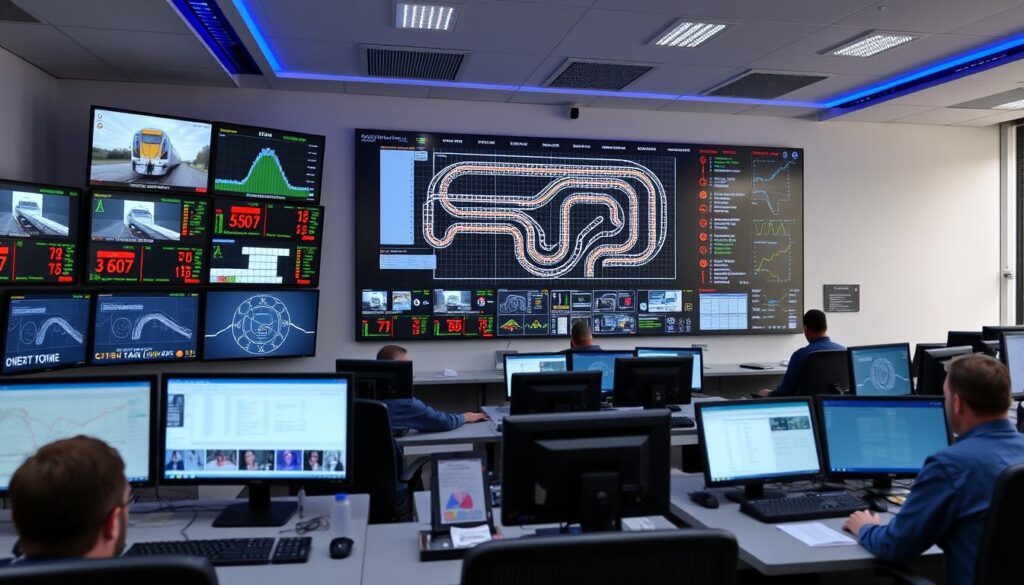Free Railway Signaling Systems Comparison Guide
Download our comprehensive comparison of modern railway signaling technologies, including detailed specifications, implementation requirements, and cost considerations.
Modern railway signaling control center monitoring train movements in real-time
What Are Railway Signaling and Communication Systems?
Railway signaling and communication systems are integrated networks of equipment and protocols designed to control train movements, ensure safe operations, and facilitate information exchange between various components of a rail network. These systems serve as the nervous system of railways, enabling trains to operate safely at high speeds while maintaining optimal distances between each other.
Primary Functions of Signaling Systems
- Prevent train collisions by maintaining safe separation
- Control train speeds through various track sections
- Manage route setting and track switching
- Indicate track conditions and restrictions ahead
- Automate train protection mechanisms
Primary Functions of Communication Systems
- Enable real-time data exchange between trains and control centers
- Facilitate voice communication between train crews and dispatchers
- Transmit train control commands and status information
- Support passenger information systems
- Enable remote monitoring of railway infrastructure
Together, these systems create a comprehensive framework that allows railway networks to operate at maximum capacity while maintaining the highest safety standards. Modern implementations increasingly integrate digital technologies, automation, and real-time data analytics to enhance performance and reliability.
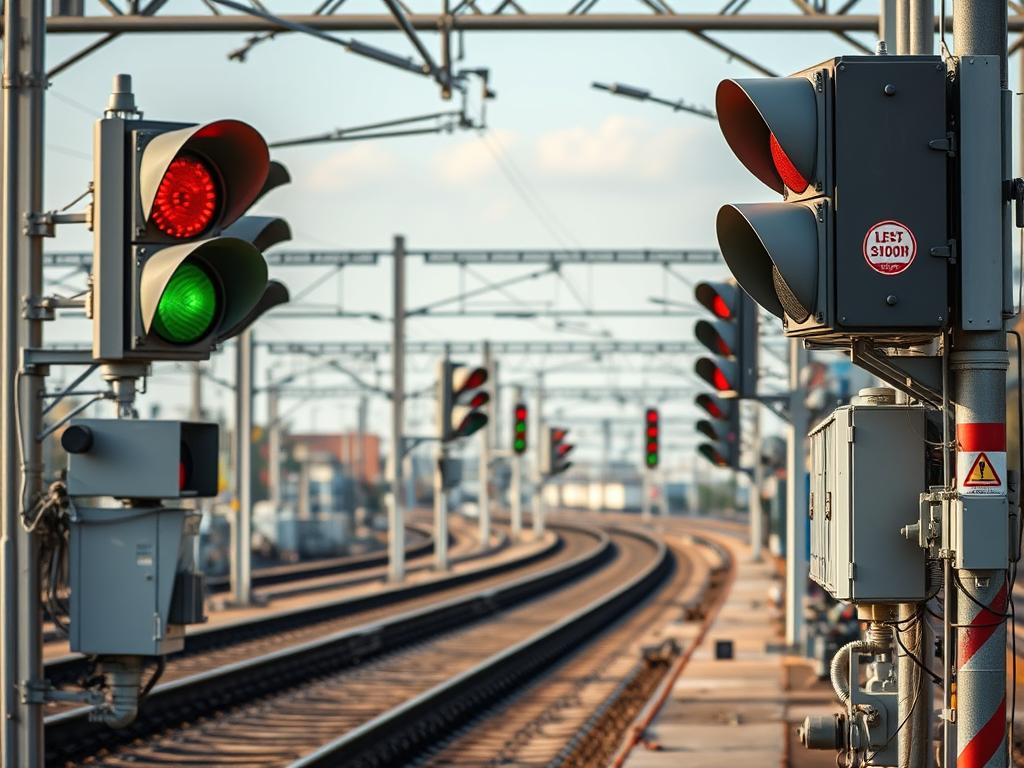
Trackside signaling equipment including signals, track circuits, and control cabinets
Key Components of Railway Signaling and Communication Systems
Signaling System Components
Track Circuits
Electrical circuits that detect train presence on a section of track by using the train’s metal wheels and axles to complete or short-circuit an electrical connection. When a train occupies a section, the track circuit changes state, automatically triggering signals to prevent other trains from entering the occupied section.
Interlockings
Safety-critical systems that prevent conflicting train movements by ensuring signals and switches operate in a coordinated manner. Modern computer-based interlockings (CBI) use software logic to verify that all conditions for safe train passage are met before allowing route setting.
Signals
Visual indicators that communicate instructions to train operators. These range from traditional color light signals (red, yellow, green) to modern in-cab signaling displays that show permitted speeds and movement authorities directly to the driver.

Diagram: Basic operation of a track circuit for train detection
Communication System Components
GSM-R (Global System for Mobile Communications-Railway)
A dedicated mobile communication system for railways that provides voice and data communication between trains and control centers. GSM-R supports critical functions like emergency calls, group calls, and data transmission for train control applications.
CBTC (Communications-Based Train Control)
An advanced signaling system that uses continuous, high-capacity, bidirectional train-to-wayside data communication to enable precise train location determination and movement authority enforcement, allowing for reduced headways and increased line capacity.
Radio Block Centers (RBC)
Central control units that manage train movements in modern signaling systems by processing train position reports, calculating safe movement authorities, and transmitting control commands to trains via radio communication networks.
Safety Standards Checklist
Access our comprehensive checklist of international safety standards and compliance requirements for railway signaling systems implementation.
How Railway Signaling Systems Ensure Safety and Efficiency
Railway signaling systems employ multiple layers of protection and coordination mechanisms to maintain safe train operations while maximizing network capacity. These systems follow strict safety principles and are designed with redundancy to prevent single points of failure.
Safety Mechanisms and Protocols
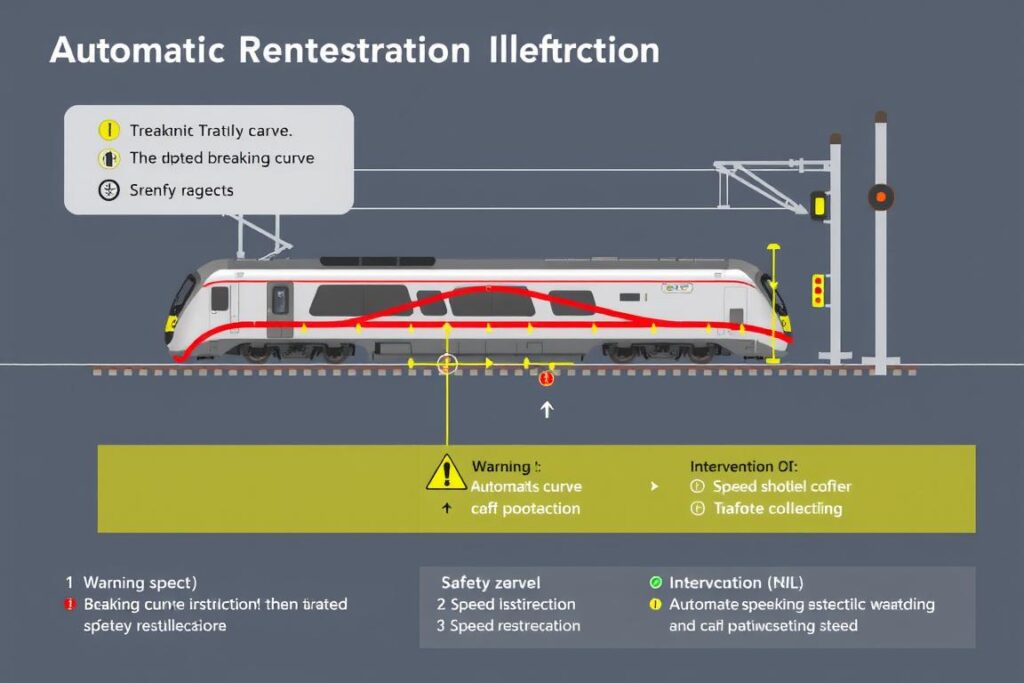
Automatic Train Protection system showing braking curves and safety zones
SIL (Safety Integrity Level) Standards
Railway signaling systems are developed according to strict Safety Integrity Level standards, typically SIL 4 for critical functions. These standards define the probability of dangerous failures and require rigorous verification and validation processes during system development and implementation.
| SIL Level | Probability of Dangerous Failure | Application in Railway Signaling |
| SIL 4 | 10^-8 to 10^-9 per hour | Train protection systems, interlockings |
| SIL 3 | 10^-7 to 10^-8 per hour | Track circuits, axle counters |
| SIL 2 | 10^-6 to 10^-7 per hour | Level crossing protection |
| SIL 1 | 10^-5 to 10^-6 per hour | Non-safety critical functions |
Fail-Safe Mechanisms
Railway signaling systems are designed with the “fail-safe” principle, meaning that any component failure must result in a more restrictive condition. For example, if a signal circuit fails, the signal automatically displays its most restrictive aspect (typically red), ensuring trains stop rather than proceed unsafely.
Block Systems
The fundamental safety principle in railway signaling is the block system, which divides tracks into sections (blocks) and allows only one train in each block at a time. Modern systems use:
- Fixed Block: Traditional approach with predefined block sections
- Moving Block: Dynamic spacing based on train position, speed, and braking capabilities
Automatic Train Protection (ATP)
ATP systems monitor train speed and automatically apply brakes if a train exceeds permitted speed limits or approaches a stop signal. Key functions include:
- Continuous speed supervision
- Emergency braking for signal violations
- Train position monitoring
Efficiency and Capacity Optimization
Modern signaling systems not only ensure safety but also optimize network capacity through sophisticated traffic management and real-time coordination.
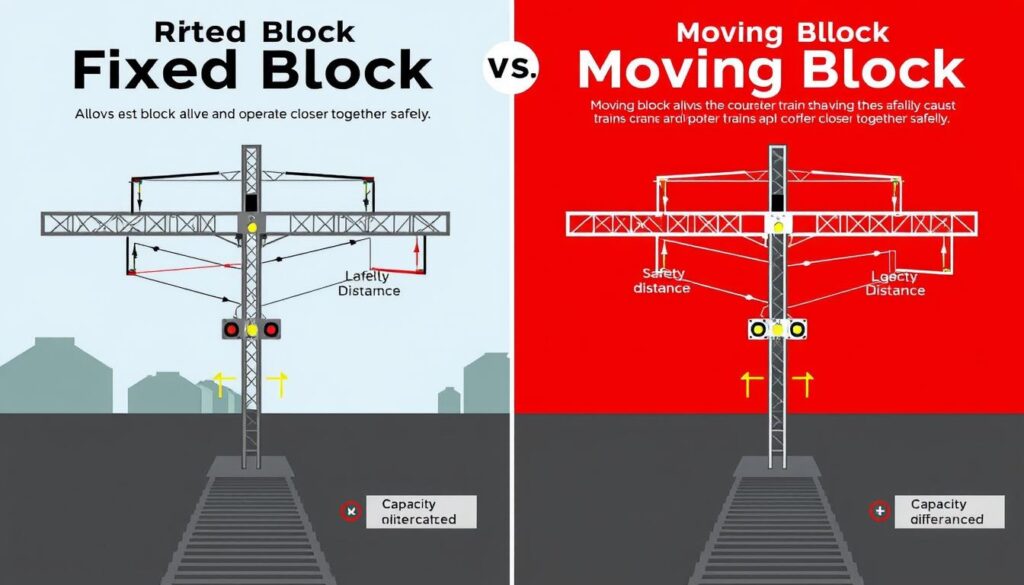
Comparison: Fixed block vs. moving block signaling showing capacity improvements
Traffic Management Systems
Centralized traffic control systems optimize train movements across the network by:
- Automatically routing trains based on schedule and real-time conditions
- Resolving conflicts and minimizing delays
- Providing decision support for operators during disruptions
Real-Time Communication
Modern communication systems enable efficient operations through:
- Continuous data exchange between trains and control centers
- Precise train location tracking using GPS and other positioning technologies
- Dynamic updates to timetables and movement authorities
Legacy vs. Modern Railway Signaling Technologies
The evolution of railway signaling systems spans over 150 years, from simple mechanical signals to sophisticated digital systems. Understanding this progression helps contextualize current technologies and future trends.

Timeline: Evolution of railway signaling technologies from mechanical to digital systems
| System Type | Era | Key Features | Limitations | Modern Applications |
| Semaphore Signals | 1840s-1950s | Mechanical arms indicating stop/proceed | Limited visibility, manual operation, maintenance intensive | Heritage railways, some rural lines |
| Color Light Signals | 1920s-Present | Electric lights showing red/yellow/green aspects | Fixed block operation, limited information to drivers | Widespread use on conventional lines |
| Automatic Block System (ABS) | 1870s-Present | Track circuits for train detection, automatic signal control | Fixed capacity, weather sensitivity | Secondary lines, backup systems |
| ETCS (European Train Control System) | 1990s-Present | Standardized digital control, in-cab signaling, cross-border interoperability | High implementation cost, complex migration | High-speed lines, international corridors |
| CBTC (Communications-Based Train Control) | 1980s-Present | Moving block operation, continuous communication, precise train control | Limited to closed networks, high technical complexity | Metro systems, urban railways |
Key Differences Between Legacy and Modern Systems
Modern Digital Systems Advantages
- Increased line capacity through moving block operation
- Enhanced safety with continuous train protection
- Reduced trackside equipment requirements
- Real-time data for traffic optimization
- Support for higher operating speeds
- Lower maintenance costs over system lifetime
Legacy Systems Limitations
- Fixed capacity constraints due to block length
- Limited information provided to train operators
- Higher maintenance requirements for physical equipment
- Weather sensitivity affecting reliability
- Limited automation capabilities
- Difficulty integrating with modern control systems
Technology Migration Roadmap
Planning to upgrade from legacy to modern signaling systems? Download our step-by-step migration roadmap with implementation timelines and cost considerations.
Real-World Examples of Advanced Railway Signaling Systems
Examining successful implementations of railway signaling and communication systems provides valuable insights into their practical applications and benefits. Here are three notable examples from different regions:
Japan’s Shinkansen: Digital ATC System

Japan’s Shinkansen utilizing Digital ATC for high-speed operations
Japan’s Shinkansen (bullet train) network employs a sophisticated Digital ATC (Automatic Train Control) system that has enabled one of the world’s safest and most punctual high-speed rail services.
Key Features
- Continuous speed control with onboard computers
- Automatic braking for speed compliance
- Earthquake detection and automatic emergency braking
- Centralized traffic management system
Results
- Zero passenger fatalities due to train accidents since 1964
- Average delay of less than one minute per train
- Trains operating at speeds up to 320 km/h (200 mph)
- Headways as short as 3 minutes during peak periods
European Rail Traffic Management System (ERTMS)
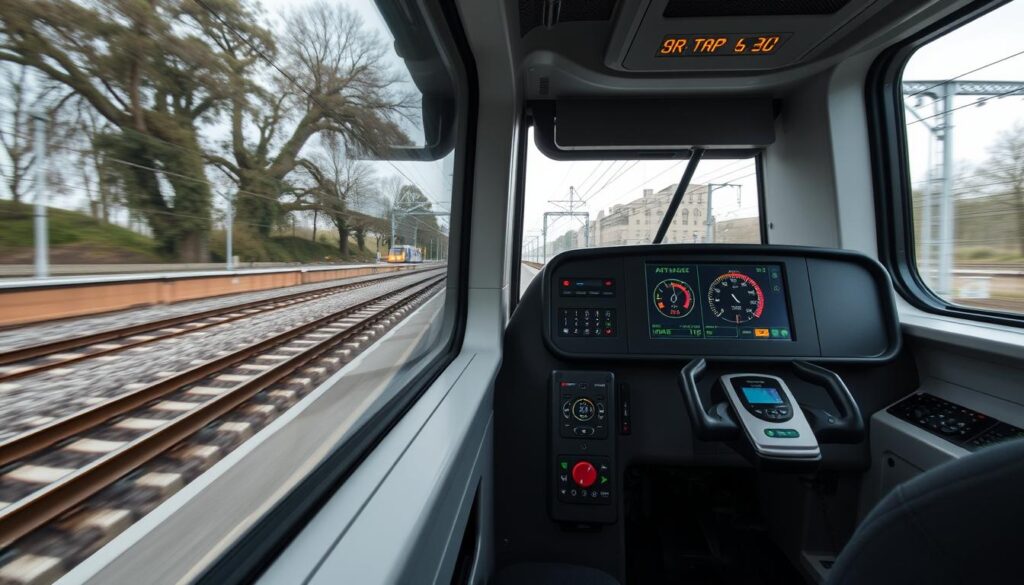
ERTMS implementation with in-cab display and trackside balises
The European Rail Traffic Management System (ERTMS) is a standardized signaling and control system designed to replace the various national systems across Europe, enabling seamless cross-border train operations.
Key Components
- ETCS (European Train Control System) for train protection
- GSM-R for voice and data communication
- ETML (European Traffic Management Layer) for traffic management
Implementation Levels
- Level 1: Balise-based intermittent communication with existing signals
- Level 2: Continuous GSM-R communication with reduced trackside signals
- Level 3: Moving block operation with train integrity monitoring
ERTMS has been successfully implemented on high-speed lines in Spain, Italy, Belgium, and other European countries, enabling interoperable train services and increased capacity.
Indian Railways’ Kavach ATP System
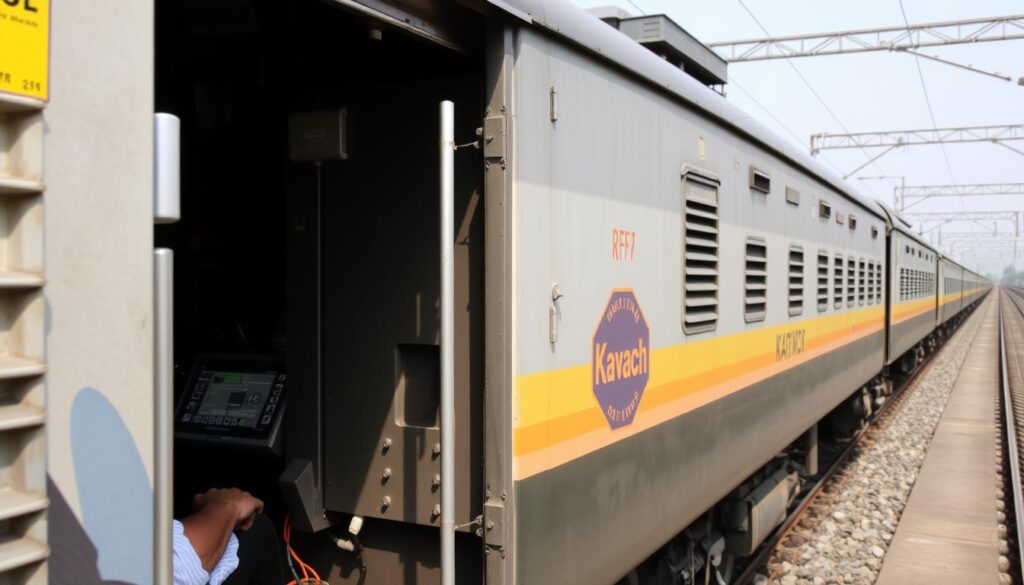
Indian Railways’ indigenous Kavach ATP system implementation
Kavach (meaning “armor” in Hindi) is an indigenously developed Automatic Train Protection (ATP) system by Indian Railways, designed to prevent train collisions and enhance safety across India’s vast railway network.
System Capabilities
- Automatic brake application when trains exceed speed limits
- Station approach warning with auto-braking
- Prevention of signal passing at danger (SPAD)
- Train collision avoidance through direct train-to-train communication
Implementation Status
- Successfully deployed on over 1,465 km of South Central Railway
- Plans for nationwide implementation on 34,000 km of high-density routes
- Cost-effective solution compared to imported systems
- Designed for Indian operating conditions and infrastructure
Emerging Trends in Railway Signaling and Communication
The railway signaling and communication sector is experiencing rapid technological advancement, with several emerging trends poised to transform train operations and infrastructure management.

AI-based predictive maintenance system analyzing signaling equipment health
AI-Based Predictive Maintenance
Artificial intelligence and machine learning are revolutionizing maintenance practices for railway signaling systems by predicting potential failures before they occur.
Key Applications
- Anomaly detection in signal performance data
- Predictive analytics for component failure
- Optimization of maintenance schedules
- Automated fault diagnosis
Benefits
- Reduced system downtime and service disruptions
- Lower maintenance costs through condition-based maintenance
- Extended equipment lifespan
- Improved system reliability and safety
5G Integration and Next-Generation Communications
The transition from GSM-R to 5G and Future Railway Mobile Communication System (FRMCS) will enable higher data throughput, lower latency, and enhanced reliability for critical railway applications.
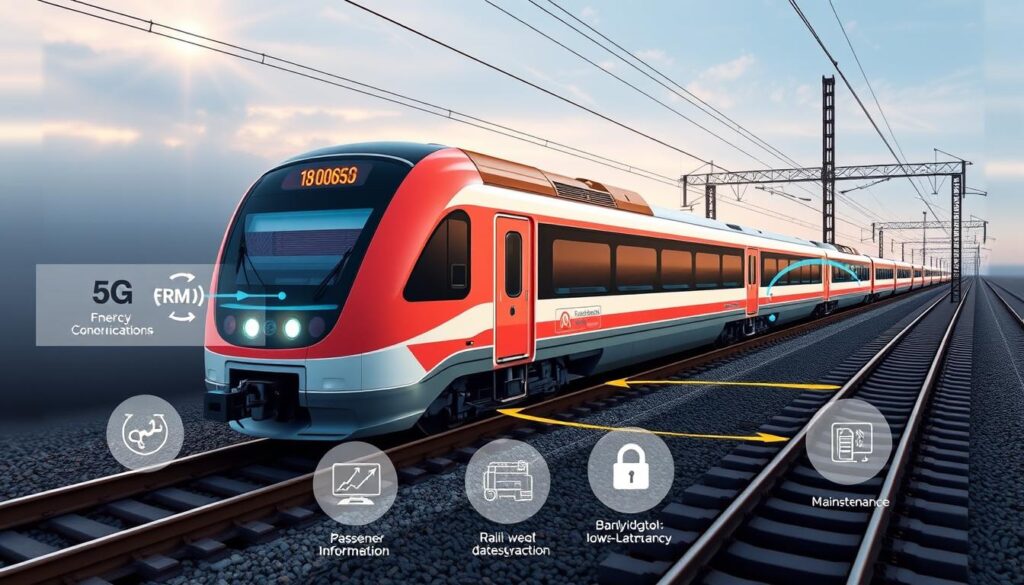
Next-generation 5G and FRMCS communication infrastructure for railways
Enhanced Capabilities
- Higher bandwidth for video and sensor data transmission
- Ultra-reliable low-latency communication for critical applications
- Network slicing for service prioritization
- Support for massive IoT device connectivity
Applications
- Advanced train control with reduced headways
- Real-time video monitoring for security
- Enhanced passenger information services
- Remote diagnostics and maintenance
Cybersecurity Challenges and Solutions
As railway signaling systems become more digitized and connected, cybersecurity has emerged as a critical concern requiring specialized protection measures.
Key Threats
- Unauthorized access to control systems
- Denial of service attacks
- Malware targeting safety-critical functions
- Data manipulation affecting train control
Protection Strategies
- Defense-in-depth architecture with multiple security layers
- Secure-by-design development practices
- Regular security assessments and penetration testing
- Incident response planning and simulation

Defense-in-depth cybersecurity architecture for railway signaling protection
Complete Railway Signaling Resource Pack
Get access to our comprehensive resource pack including the Systems Comparison Guide, Safety Standards Checklist, and Technology Migration Roadmap in one convenient download.
Conclusion: The Future of Railway Signaling and Communication
Railway signaling and communication systems continue to evolve, driven by technological innovation, increasing safety requirements, and the need for greater capacity and efficiency. The transition from traditional fixed-block systems to advanced moving-block technologies with continuous communication represents a fundamental shift in how railways operate.
As we’ve explored throughout this article, modern systems like ETCS, CBTC, and country-specific implementations provide enhanced safety through continuous train protection, improved capacity through optimized train spacing, and greater operational flexibility through centralized traffic management.
The integration of artificial intelligence, 5G communications, and robust cybersecurity measures will further transform railway operations, enabling more autonomous functions, predictive maintenance, and seamless interoperability across networks. These advancements will be crucial in meeting the growing demand for rail transport while maintaining the highest safety standards.
For railway professionals, staying informed about these evolving technologies and implementation strategies is essential to making sound decisions about system upgrades, maintenance practices, and long-term infrastructure planning.
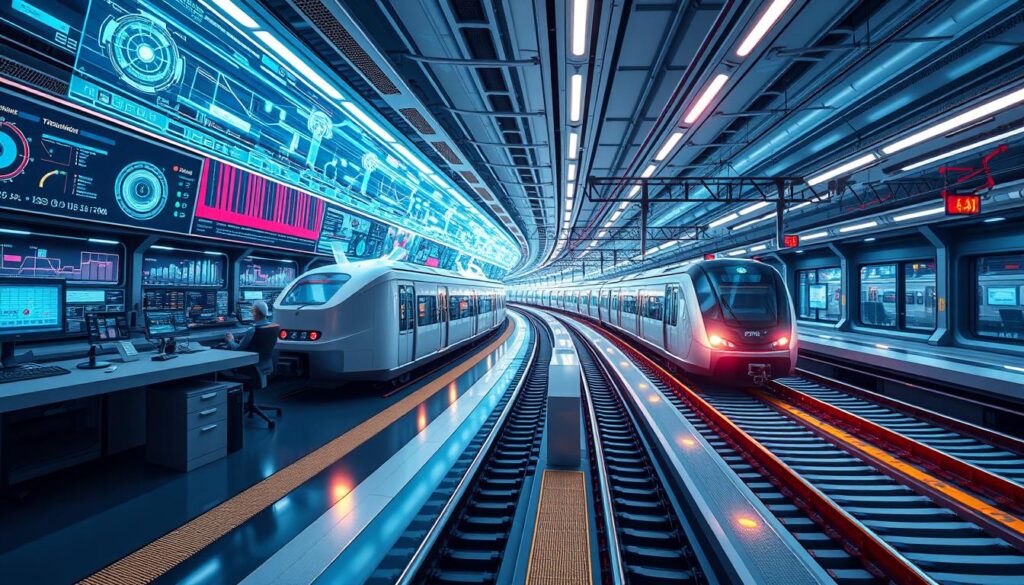
Vision of future integrated railway signaling and communication systems
